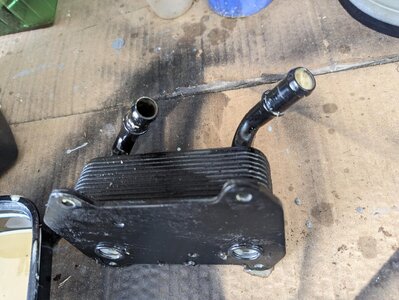ma2t
Member
New to me to me, I've got a 2003 Seadoo Sportster 4-tec with milky oil, let's say chocolate milk. I'm hearing that means there is water in the oil. I
don't know the history of this boat.
This is what I have done so far. I first changed the oil and filter, let it run for about 2 minutes (turn water on after engine start, turn water off before engine stop), and the oil color seemed a little better. So I did two more oil changes, now a total of three, and each time it has improved the oil color over the last. Now it looks like skim milk in hot tea, although thick like oil.
Should I keep going with more oil changes? Oil floats on top of water, would there be a pocket of water in the bottom of the engine? Each oil change is about 2.3 quarts and I am reading that the oil capacity is closer to 3 quarts. I am using the dipstick straw to remove oil.
It sounds pretty good when running, but perhaps a little rattling going on. I am new to this motor and don't know what is normal. I can probably post a video and/or a picture of the dipstick someplace.
Video of it running
Problem 1: Cloudy oil, water in oil
Problem 2: 4-beeps when not running
Problem 3: Tach not working
Thanks in advance for your ideas on this.
don't know the history of this boat.
This is what I have done so far. I first changed the oil and filter, let it run for about 2 minutes (turn water on after engine start, turn water off before engine stop), and the oil color seemed a little better. So I did two more oil changes, now a total of three, and each time it has improved the oil color over the last. Now it looks like skim milk in hot tea, although thick like oil.
Should I keep going with more oil changes? Oil floats on top of water, would there be a pocket of water in the bottom of the engine? Each oil change is about 2.3 quarts and I am reading that the oil capacity is closer to 3 quarts. I am using the dipstick straw to remove oil.
It sounds pretty good when running, but perhaps a little rattling going on. I am new to this motor and don't know what is normal. I can probably post a video and/or a picture of the dipstick someplace.
Video of it running
Problem 1: Cloudy oil, water in oil
Problem 2: 4-beeps when not running
Problem 3: Tach not working
Thanks in advance for your ideas on this.
Last edited:




